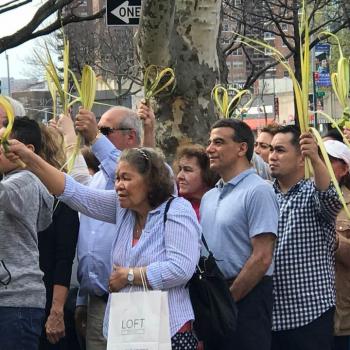The New York Times tells the story of how one community coped with its aging population:
At the foot of a long drive leading to the Franciscan Retreat Center in Hastings-on-Hudson, N.Y., the “Welcome and Parking” sign is misleading. The convent closed in 2011, when its original population of 100 nuns had dwindled to 35, the youngest past age 60, most in their 80s and 90s, and a few past their 100th birthdays.
Now the huge building, at the crest of a great sloping lawn, is empty. A private security guard patrols the 7.5-acre property, much of it already sold off to a gated condominium community next door and the rest of it waiting for a buyer. Only a rough hewn stone crucifix and other religious statuary announces what used to be here — plus a mound of empty plastic cups from fast-food restaurants by the entrance, abandoned by local teenagers. One can easily imagine the nuns shaking their fingers at the litterbugs, then cleaning up the mess.
The nuns here, as in most orders, had lived in the motherhouse as teenage novitiates, then during their working years in apartments in the outside world, shared with others from the order. They returned in old age, and inside the motherhouse or out, virtually their entire lives were lived among kindred souls. The nuns were never isolated, never without love and support. Arguably, these women are the most distilled example of what it means to have a community, which all research shows is crucial to successful aging.
But at just the moment when that community would mean the most, they were cast adrift.
There was no malice, only years of deliberation and consultation in the decision to disperse this local order of the Sisters of Saint Francis of the Neumann Communities to nearby facilities for the elderly. For that the nuns are grateful. But they are not unmarked by the disruption.
“Right from the beginning, most of the sisters understood the necessity, but that doesn’t make it easier,’’ said Sister Maria Salerno, part of the regional leadership team that looked at all the alternatives, made the hard decisions, consulted all the nuns and then organized the diaspora. “This is the most painful, emotional thing our sisters have ever been through. But we could either choose our future, just wait for it to happen, or let someone else choose it for us.’’
As far back as 2004, with their ranks aging and virtually no infusion of young women into the religious life, the Hastings congregation merged with other Sisters of Saint Francis congregations from Syracuse and Williamsville, in upstate New York. They hoped to pool their resources to care for a wave of aged and increasingly infirm nuns.
Another merger, in 2007, with a Pittsburgh order, created the Neumann Communities. Each order still operated in its own convent, with its own mission. The nuns from Hastings mostly staffed the Mount Loretto facility on Staten Island for children ordered by the courts into congregate placements, as well as the Nazareth Montessori nursery in New York City and St. Francis Hospital in Poughkeepsie. Some taught in parish high schools in Northern Westchester.
While their combined numbers increased as a result of the mergers, Sister Salerno explained, the congregation’s costs remained unsustainably high.
“Our main mission is service,’’ she said, “and we can’t discourage the possibility of newcomers by letting them think if they join us, it will mean coming to take care of a lot of old ladies.’’












